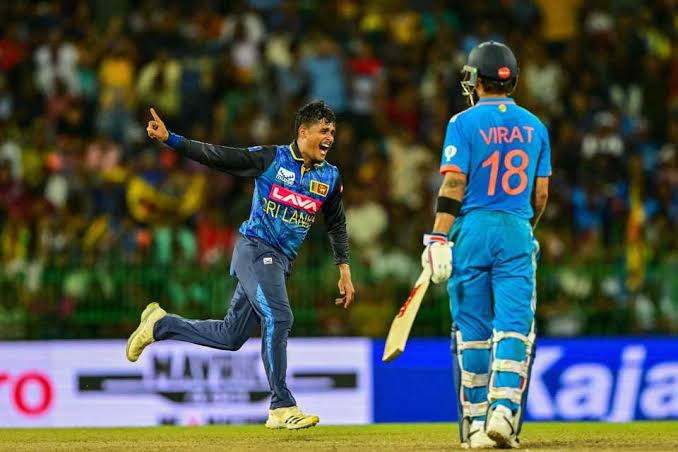Of late, Rohit Sharma has adopted an aggressive batting approach during the powerplays, realizing that he struggles against spin. Same applies on Virat Kohli as well, who has become a hit or miss player now. In reality, since 2019, India batters have crumbled even against mediocre spinners. Thus, the result against Sri Lanka’s quality spinners on rank turners was written on the wall! In both the ODIs, Sri Lanka has exposed Indian batters vulnerability against spin bowling!
Once would have been understandable. But going down the same road twice, after yet another stirring opening stand, imploding exactly the way they did on Friday, only to lose this time to Sri Lanka while chasing 241, points to some concerns against spin bowling that India will want to quickly address. A fumble by the middle-order was again at the heart of this insipid 32-run defeat at the R Premadasa in Colombo, Jeffrey Vandersay (6/33) and Charith Asalanka sharing nine wickets between them as Sri Lanka defended 240 or less against India for the first time since 2008. First match tied, Sri Lanka now can’t lose this three-match ODI series.
As much as this win will inspire Sri Lanka to finally turn a corner after a depressing run in white-ball cricket, India might be looking at issues they probably never knew existed.
India were asked to chase down 241 on a pitch that had plenty of assistance for the spinners, and they ended up at 208 all out in 42.2 overs with Vandersay wrecking them with a haul of six for 33.
A different result loomed as long as skipper Rohit was at the crease, creaming the Lankan bowlers en route to his 64 off 44 balls (5×4, 4×6). Unmindful of the nature of the pitch, Rohit cut, swept and pulled spinners Dunith Wellalage and Akila Dananjaya and pacer Asitha Fernando to all parts of the ground in the company of a compact Shubman Gill (35, 44b) as India waltzed to 97 in just 13.3 overs.
But a fatal reverse sweep off Vandersay that was taken by a diving Pathum Nissanka snapped Rohit’s stay, and it also put the Indian batting unit in a tailspin.
The 97 for one became 116 for two in 17.1 overs and it transpired into even trickier 116 for three four balls later. But more shocks were in store for the Indians as they tumbled to 123 for four, 133 for five and eventually to 147 for six.
That was six wickets for 50 runs in the span of 10 overs, and the dance of destruction was performed by one man – Vandersay – who came in as a replacement for injured Wanindu Hasaranga.
Despite the cluster of wickets, India still had a decent chance of winning with Axar Patel and Washington Sundar adding 38 runs for the seventh wicket. With Patel, the intent was clear as he charged at Asalanka in his first over. First ball, he crunched a lofted drive for a massive six over extra-cover. Out came the slog-sweep when the length was a bit fuller, fetching Patel a four through square-leg. And when he whacked Asalanka for another four through short fine-leg to get 14 runs from that over, the game seemed poised for a closer finish.
It didn’t materialise though. Once Patel and Washington were dismissed in quick succession, India ran out of steam.
The match was all about Sri Lanka spinner Jeffery Vandersay running a one-man show for his side against the Indian batting unit, and that too, with some flair to his game. Vandersay single-handedly left the majority of the Indian batting lineup stunned at the crease.
The performance of the Indian batting unit in these two ODIs, specifically the second, clearly highlighted the lack of stability and structure in coach Gautam Gambhir’s side. Early days with the team, one can argue that these will be considered the preparation-stages for Gambhir’s era of Indian cricket. However, the tendency of the middle order batters failing to build on a strong start given to the side by the openers raises question on the order of batters in this Indian side, and whether or not Gambhir and Rohit will try something different in the 3rd and decisive ODI.







